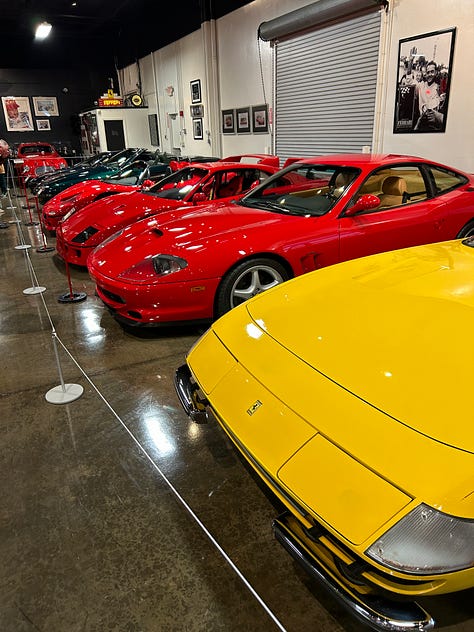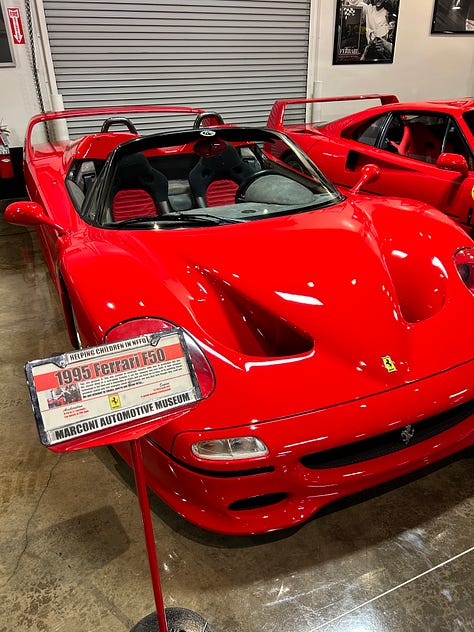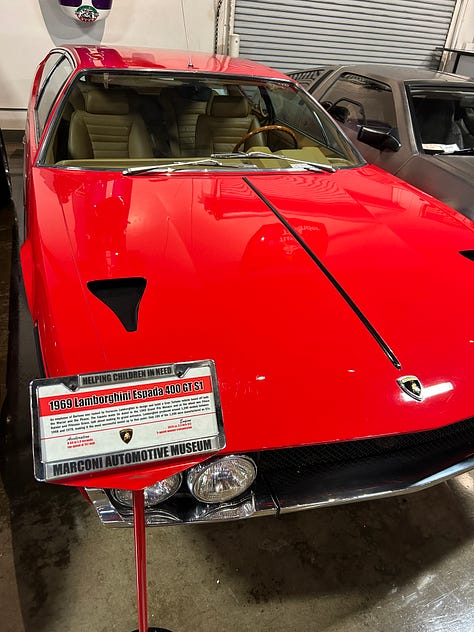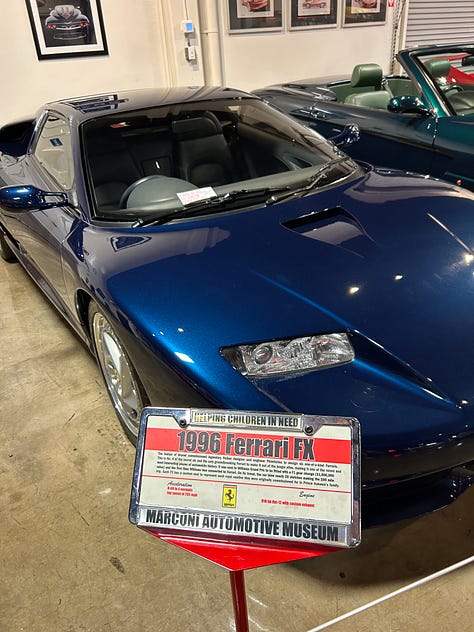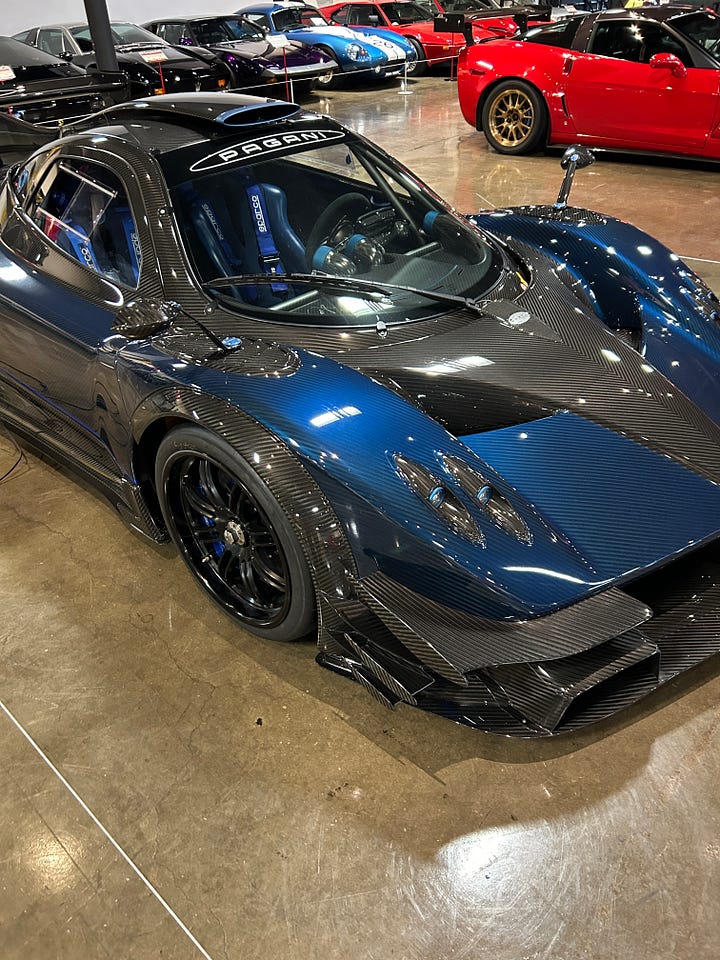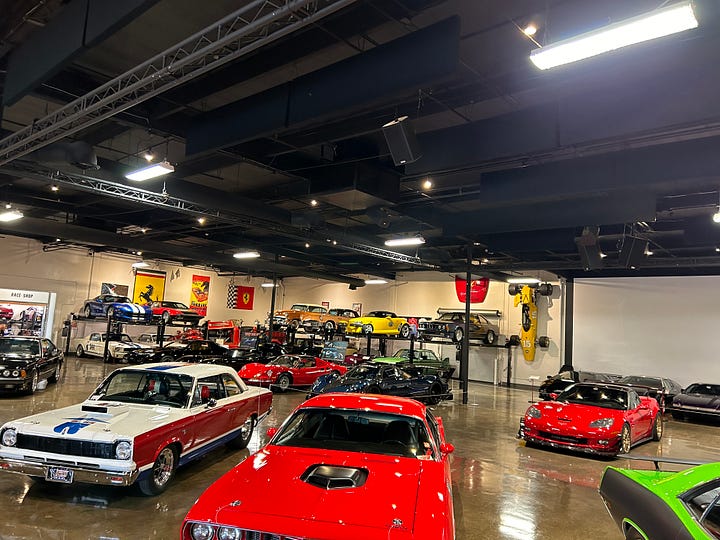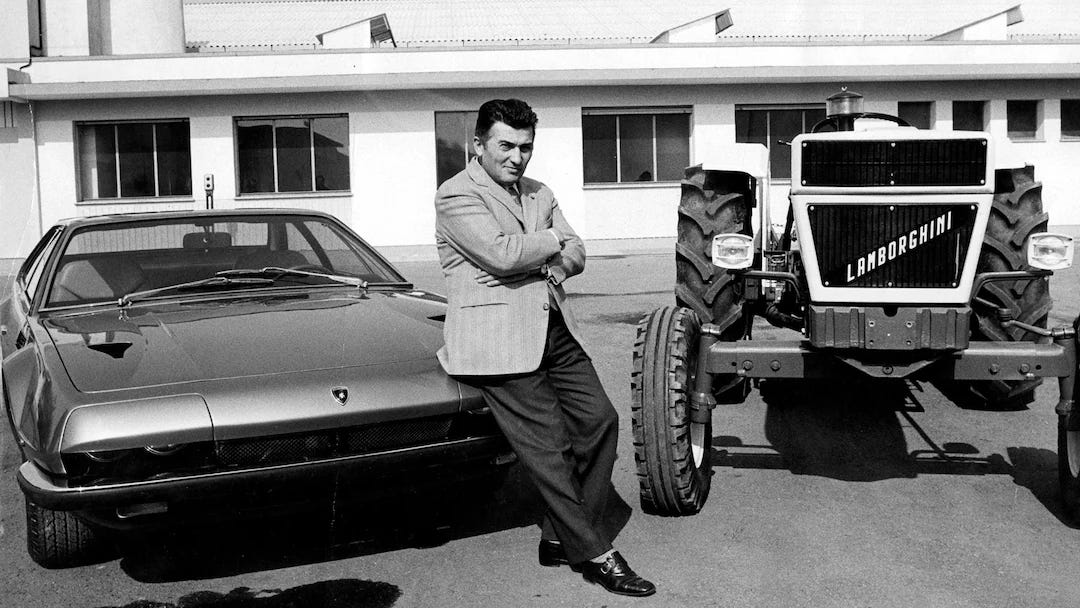I’ve never driven a Ferrari. Heck, I’ve never even sat in a Ferrari. But I can appreciate the beauty of the design and engineering that goes into one. After visiting the Marconi Auto Museum in February and seeing the many Ferraris they had, I wanted to learn more about Enzo Ferrari, the brand, and the car. What I found was a fascinating lesson in the power of rivalry.
The story begins in 1962. Ferruccio Lamborghini, an Italian manufacturer of tractors and heating systems, owned a Ferrari and complained to Enzo Ferrari about the quality of the car’s clutch. Ferrari did not take criticism well and dismissed Lamborghini as a tractor manufacturer who knew nothing about high-quality cars. So, Ferrari told Lamborghini as much, telling him to go back to making farm equipment.
But Lamborghini had practical know-how, and after his meeting with Ferrari, he had a clear goal in mind—to beat Ferrari. Just a year later, Lamborghini came out with his own sports car, the 350 GTV prototype.
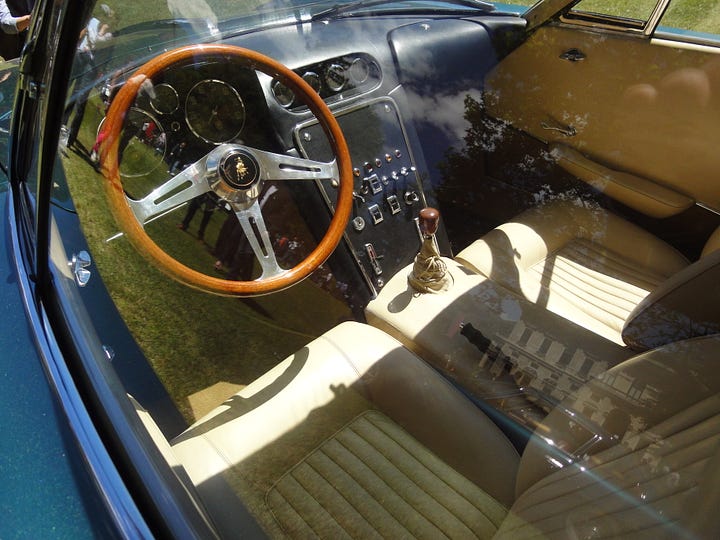

Unable to deal with competition, Ferrari tried to disrupt the Lamborghini supply chain and cut off supplier parts. He also mounted a campaign against Lamborghini employees, some of whom had come from Ferrari when Lamborghini strategically located his new factory near the Ferrari and Maserati factories.
In response, Lamborghini got to work. He started putting out a series of vehicles that surpassed the Ferraris of the time in terms of power, size, and design. Lamborghini became a definitive “supercar” style—the Lamborghini Countach was the example of my childhood—while Ferrari struggled to keep up. In 1972, Ferrari and Lamborghini faced off head-to-head with the Lamborghini Miura and Ferrari Daytona. The Daytona lost.
Ferrari had its own internal struggles around this time, but began to grow in the mid-1970’s. The growth of Ferrari in the United States was spearheaded by a single dealer—Brian Burnett and Ferrari of Los Gatos. The book about Brian, The Dealer: How One California Dealership Fueled the Rise of Ferrari Cars in America is a short book that contains a lot of lessons about business. (The short version is here: “The Boy Who Owned a Ferrari Dealership.”) Enzo Ferrari’s death brought about a quick end to Ferrari of Los Gatos as the dominant dealer in the world as corporate interests (aka, greed) led Ferrari corporate to purchase back successful independent dealers by threatening not to send vehicles if the dealer did not sell back to Ferrari. Ferrari apparently did not see how its independent dealers were best suited to engage in competition with other automakers’ dealers.
The Lamborghini-Ferrari rivalry made each car maker better. It also brought them each to the brink of disaster. As they continued to push the boundaries of performance and design, they focused on winning the rivalry rather than making profits. They were focused on the short-term win. But those short-term wins led to near bankruptcy and resulting changes in ownership. Now that both brands are part of large conglomerates, they are more financially stable. And the rivalry continues, as each brand tries to one-up the other with new and different designs and innovations. (If you’re interested in cars, Go Like Hell is another book to read about the Ford-Ferrari rivalry.)
The Ferrari-Lamborghini rivalry is just one example of a great business rivalry. And for them, the rivalry was a catalyst for growth and development for each company. Lots of other rivalries exist, however, and they have been beneficial to each. Think of Coke v. Pepsi, Apple v. Microsoft, Nike v. Adidas. Even personal rivalries have borne great fruit, like the Dan v. Dave rivalry leading up to the 1992 Olympics. And don’t forget the race to the South Pole between Robert Scott and Roald Amundsen. These men were pushed to the edge of their abilities because the rivalry—even more than the exploration itself—seemed to be a driving factor. It was not enough to get to the South Pole. Each wanted to be first and to beat the other.
Business rivalries are generally good for consumers. Businesses who engage in these rivalries often create new products at a higher rate, expand consumer options, and lower prices. Sometimes those efforts fail—see the New Coke debacle—but such failures are just signs that businesses are willing to innovate and try new things. The debates can also be a lot of fun for consumers. The differences between Macs and PCs are obvious, but the rivalry between Apple and Microsoft has pushed both companies to innovate in their own ways to gain market share.

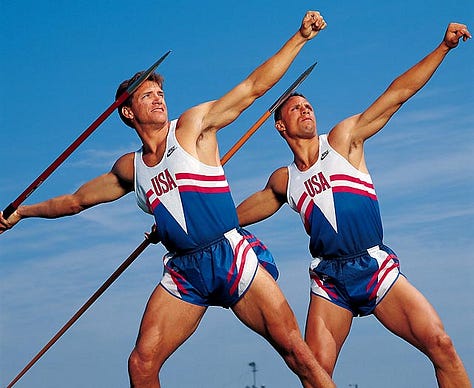
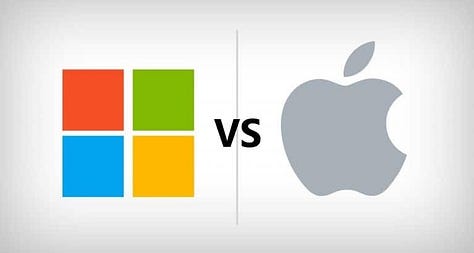
The rivalry between Adidas and Nike was not much of a rivalry before Nike landed the Michael Jordan sponsorship, captured in the movie, Air. Nike had a small market share and struggled to compete with Adidas. With Air Jordans, Nike established itself as a market leader, and Adidas and Nike have been striving to out-do each other. It’s doubtful that Nike would have made a huge bet on Michael Jordan and using all of its sponsorship dollars to sponsor him in his rookie year if Nike had not been trying to beat Adidas. (Phil Knight’s memoir, Shoe Dog, is worth a read. I knew little about him personally, and it has many good business insights.)
Personal and business rivalries have the power to bring out the best in people and help them achieve more than they think they could. When I was a teacher, I assigned an anonymous number to each student and posted a ranking of students throughout the semester using their numbers. Students saw where they fell among their classmates in real time. Rather than spending time trying to figure out which student corresponded to which number, the students stepped up and worked harder to move up in the class rankings. It was a healthy rivalry that helped the students—especially the boys—engage the material and try their best.
If you have a business rival, how can you motivate your team to action by using that rivalry? If you don’t have a rival, can you create one? It may just be the extra motivation you need to reach your full potential.
Remember to turn every page. Enjoy your weekend. Please let me know whether you need anything.
Best,
Aaron
